7 more old tools almost no one uses anymore
The evolution of the automobile has been non-stop from the moment Karl Benz first threw the flywheel ’round on his Patent Motorwagen. The technology, process, and tools needed to keep cars running have evolved from the adjustable spanners and flat head screwdrivers to complex, hyper-specific specialized tools that spend more time laying in toolbox drawers than being used. Some old tools have stood the test of time while others have faded from common use.
We are tool hoarders ourselves, and objects designed for utility that are still functional will always have a place in our box but it is interesting to look into the corners of the toolbox and see what tools are getting less and less use over the years. Whether due to an improved design usurping the use of an older tool, or the task a specialty tool was design for becoming less popular due to car construction and use changing, tools evolve as quickly—if not more—than the car itself. Here are seven examples of tools that are no longer the toolbox staples they once were—for better or worse.
Bumper jacks
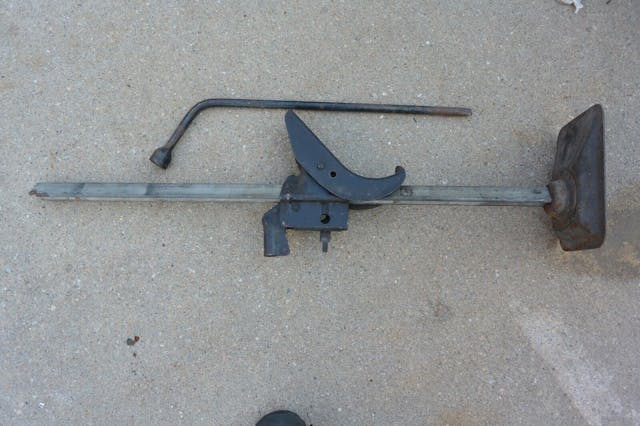
In a world of bumper covers, the thought of attaching a lifting mechanism to the exterior of your car and using it to lift the vehicle is some type of strange fever dream. It wasn’t always that way though. Flat tires have been around longer than the automobile and the need to pick up the car followed right along. Bumper jacks are good in concept but the lack of any safety catch or stabilization to keep from tipping over makes them treacherous to use. They still have utility in off-road situations but that can also make use even more dangerous.
Verdict: Keep as a reminder of how far we’ve come.
Brake pliers
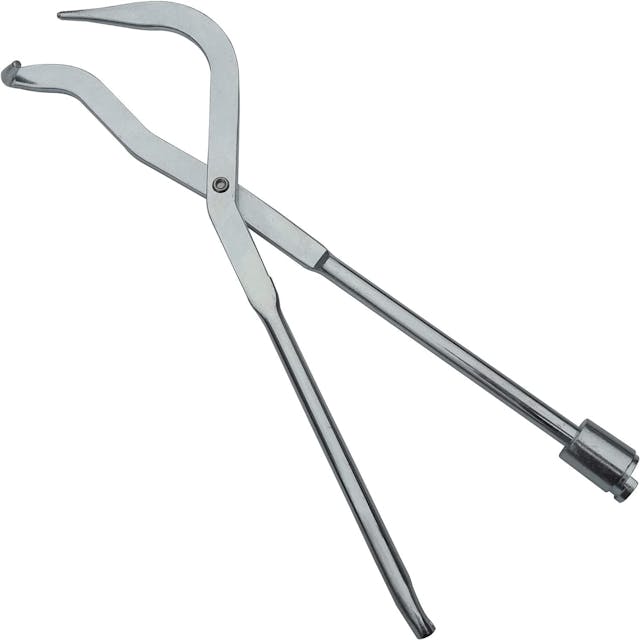
Somehow in the history of cars, there have been just two types of brakes commonly found behind the wheels: Drum or disc. Drum brakes can provide all the stopping power needed while also wearing like iron thanks to the enclosed and thus relatively debris-free nature of the design. That same design also has a handful of tension springs stretched carefully over small studs that can be serviced with groove-joint pliers and a screwdriver, but there are also brake pliers that rose and slipped from popularity right alongside drum brakes.
With modern materials and the relatively limited use of drum-brake cars, servicing drums has gotten less common to the point that while special tools can make the job easier it is only marginal and certainly not required.
Verdict: Keep them if you’ve got them but can likely pass if building your toolkit.
Growler
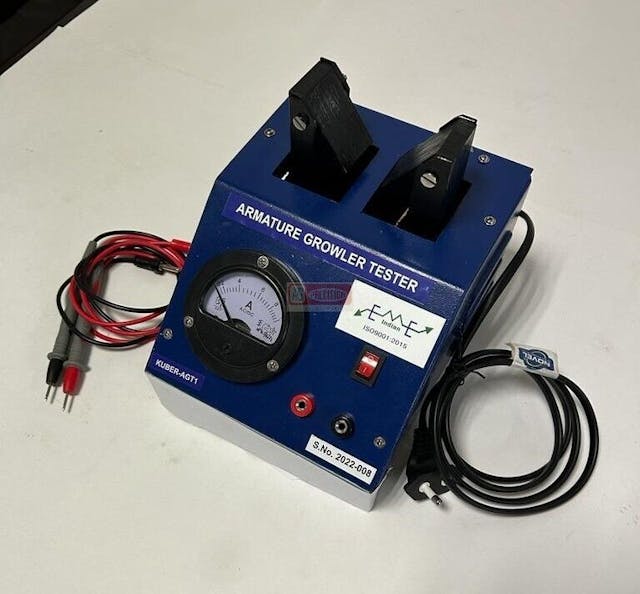
We aren’t talking about that curmudgeon of a mechanic who seems to only communicate in grunts and growls as the ratchet clicks to remove parts. No, the growler here is used to test the windings of a motor or generator. The armature is placed on a bed that flows alternating current into the windings. Using a ferrous rod to locate the magnetic field that will be created by a short makes for easy diagnostics. The price drop that came with the mass production and parts sharing between various models relegated these to hobby benches or the back room of specialist shops. Since rebuilding motors or alternators has become rare, these are practically a novelty.
Verdict: Keep if you’ve got the space, but often these find problems that are difficult to source parts to fix.
Vernier caliper

The increase in affordable precision has been quiet but amazing for at-home DIY projects. Good precision measuring devices used to be limited to the hands of skilled technicians and specialists in machine and fabrication shops. It took skill and training to properly use and read items like the vernier scale on calipers used in fabrication and precision machine work. Then digital calipers entered the market and the prices dropped year after year to the point that now a set of calipers accurate enough for most home use can be had for under $50.
Verdict: Use what you like and what works best for you. Regardless of what that is, be sure to keep any and all precision tools stored carefully to prevent damage.
Timing light
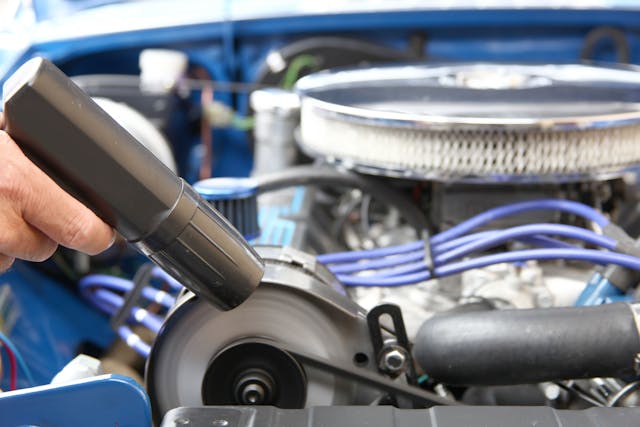
When we first wrote about tools that were fading from popularity last year, the comments section lit up with the suggestion that timing lights were left out. It’s been decades since a car rolling off the assembly line featured a tunable distributor, as the ignition is often now controlled by a computer working off data provided by a crankshaft or camshaft position sensor (or both) to control the firing of individual coils for each spark plug and cylinder. Adjusting the timing of the spark in the cylinder is changed with a laptop rather than a wrench and strobe light. Timing lights have been relegated to specialist shops and DIY garages.
Verdict: Keep it if it works, but consider a modern digital light if building a vintage-focused toolset as the features and capability have come a long way since the strobes of old.
Point file
Another from the ignition side of things. Even before computerized ignition was the advent of electronic or non-points-based discharge. Long gone are the days of having to swap a set of points on the side of the road or scratch off the char of the small faces to allow the coil to charge. A points file was handy for if or when a condenser would fail or the points would otherwise get crummy enough to not allow enough current through.
Verdict: If one is already in your glovebox, keep it for nostalgia’s sake and just in case. You never know who it might help.
Brake lathe or shoe arcing machine
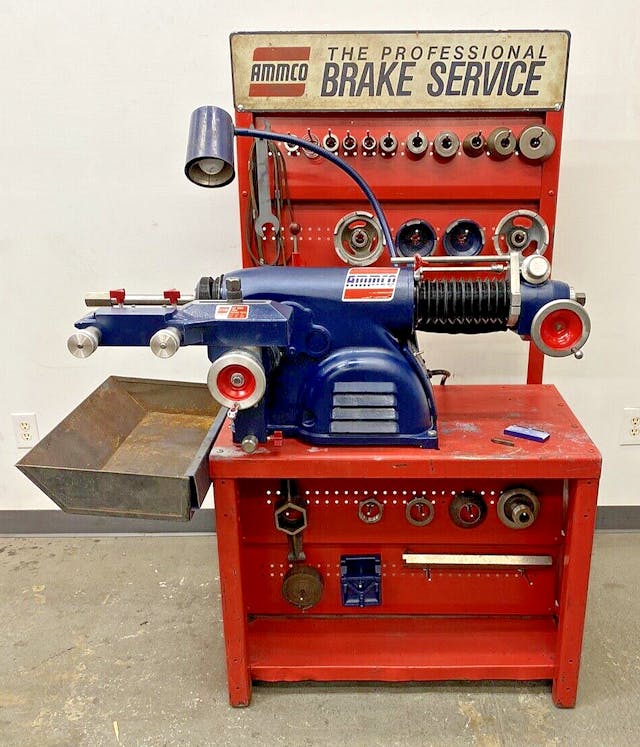
Drum brakes often have more swept area compared to disc brakes, but that additional friction material is useless if it is not in contact with the brake surface. The heat retention characteristics of drums can sometimes lead to warping that would previously be cleaned up by “turning” the drums to create a nice concentric surface around the shoes. While drums can still be found on modern cars the drums are often cast so thin that turning them is no longer an option and instead we must skip straight to replacement.
Shoe arcing machines do the same thing as brake lathes but set the radius of the friction material to match that of the drum. It’s critical for good brake performance on some vintage cars but has faded from popularity significantly due to the health concerns of grinding friction materials—especially asbestos.
Verdict: Save if you’ve got the space, or sell to a vintage shop if you don’t. We likely won’t see new versions of these tools made and they so help keep our cars safely going down the road.
***
Check out the Hagerty Media homepage so you don’t miss a single story, or better yet, bookmark it. To get our best stories delivered right to your inbox, subscribe to our newsletters.
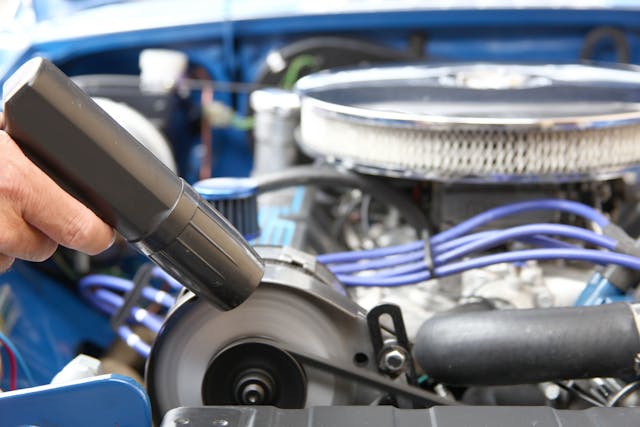
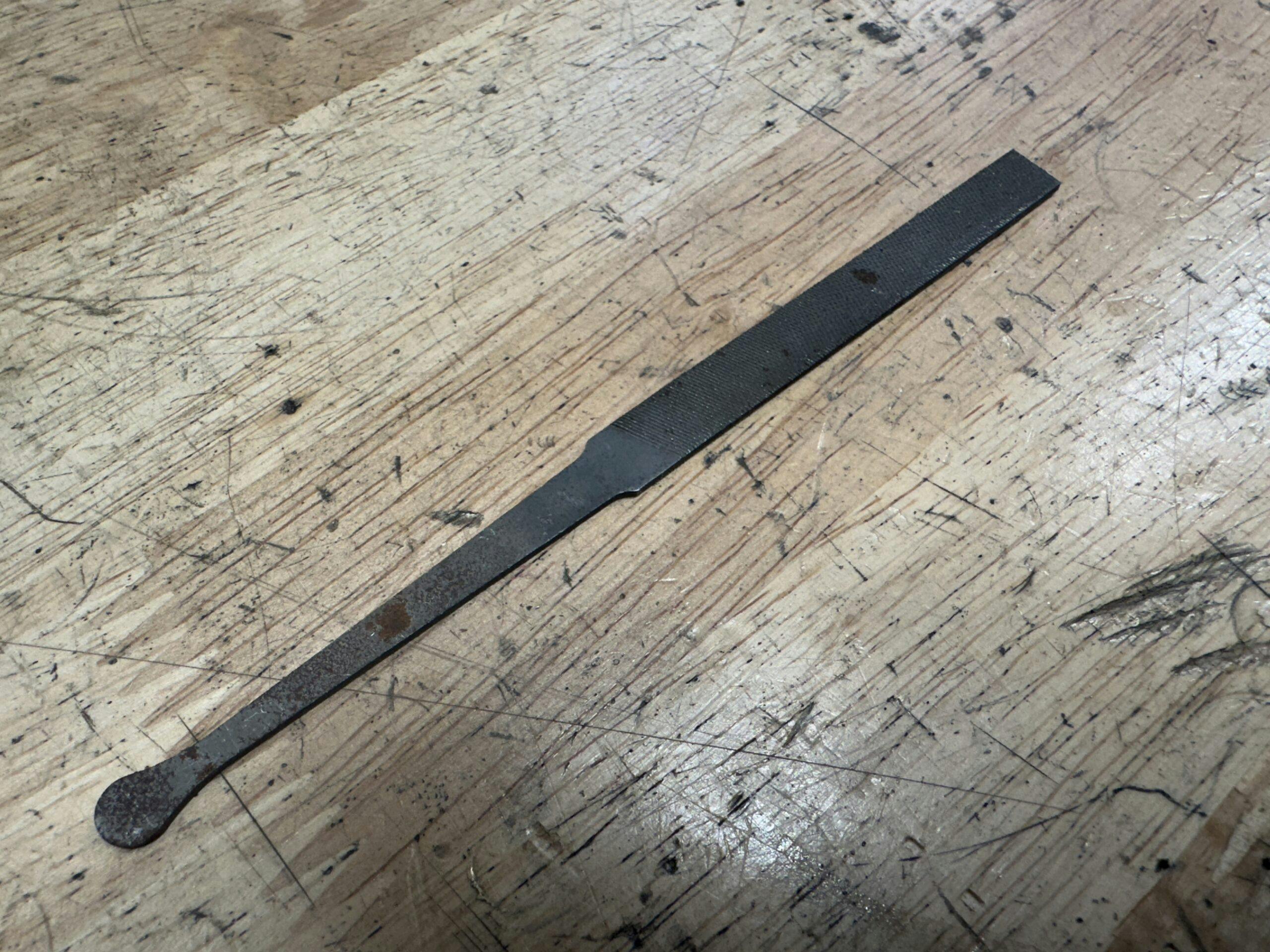
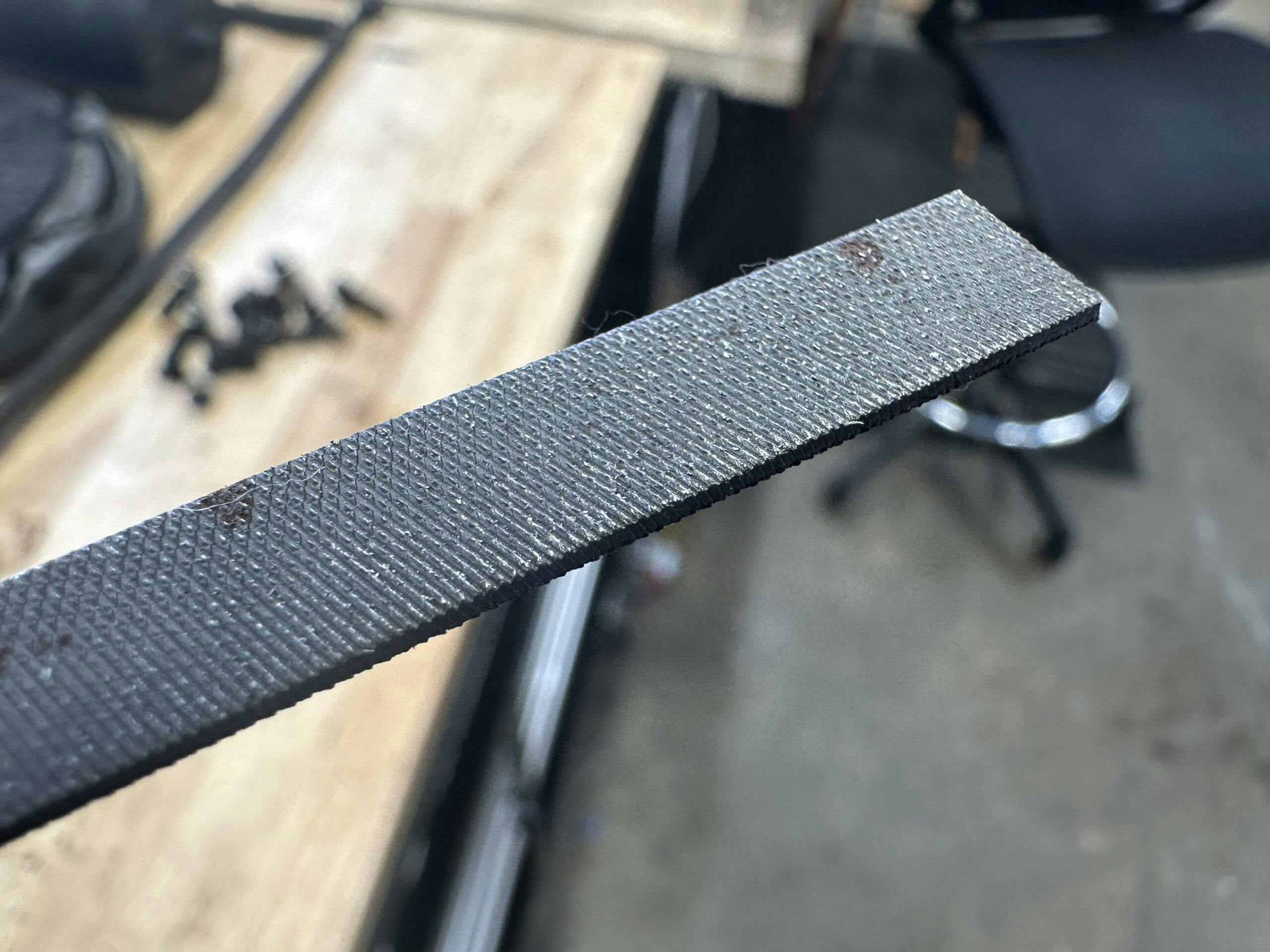


I have every tool mentioned with the acception of the Ammco Brake Lathe and the shoe arcing attachment which is not included in the photo. I know how to use the brake lathe which is set up to turn rotors. There is also a tool post grinder accessory for these lathes that allow you to grind hard spots that can appear on the braking surface of a brake drum.
The Ammco Brake lathe pictured is still in use in thousands if not hundreds of thousands of shops today. The photo of the traditional brake lathe doesn’t have the AMMCO 880 brake shoe grinder with it which may have gone the way of the Dodo bird. There are tons of vehicles old and new still using rear drum brakes. The price of cheap Chinese rotor and drums may have reduced resurfacing operations but, there’s a market for newer on car brake lathes to match to rotor to a vehicle’s suspension to solve difficult brake vibrations/pulsations.
I’m the original owner of a 1965 Mustang. Drove it off the showroom floor in December of 1964. I still have that “stuff” to tune it, change tires, etc.
Got good use of bumper jacks by jacking all the way up and pushing rear end of to the side by getting out or ruts in deep snow/ ice.
Now with better winter tires, AWD, winter driving skills- no longer necessary
Some folks still definitely lacking skills…
I own a 63 Mercury comet convertible, a number of these tools come in handy…
My wife and I owned an auto parts store in Medina Ohio from late 1987 to 1997. That brake lathe looks like an Ammco 4000 just like we used in the shop. I probably turned close to 1000 drums and rotors on that machine. The Chevy Chevette front rotors had to be the worse (close to an inch thick and solid!).
Wow! My math was off last night. I probably turned 10 pair a week. just working at our store that is over 10000 in ten years. Holy crap!
Wow ~ I’m loving the other Geezer comments, I’m a retired Journeyman Mechanic and I have and still use these tools and more .
Yesterday I replaced the oil pressure switch in my stock 1959 Volkswagen and decided to check the timing (why not) and Lo ! it was almost two degrees off, a quick adjustment later and it idles smoother .
Radiusing the brake shoes to the drums is called “arcing” and it’s a lost art .
-Nate
wow…. double birds to you hagarty – – – made an entertaining comment but got finger wagged that i was posting too quick – clicked back button and comment text was gone…. won’t bother adding my humor anymore because of that – and may just switch to the competitor come renewal time – but that’ll be because they’re way cheaper
Not exactly on point, but in 1960 a friend & I were driving from Toronto to Sudbury. We came across a late ’50s big 3 car, securely front end up by a bumper jack. The 2 ladies had a flat–the car, not them. They were perplexed as the front wheel kept turning & they couldn’t remove the nuts. We didn’t say a word, but Earl got in the driver’s seat, stepped on the brake pedal, I removed the nuts & changed the tire for them. Besides the “thank you”, they said “I didn’t know that the brakes work on the front wheels”
I gave up at page 2 but I use all these tools regularly, like every day. sure I have a 10 ton 2 post lift but still work on plenty of old stuff. and I can fix anything, have lathes ect. wish I had more Whitworth 62 ah3000. lots of fabricating, bulldozers, snocats, trackhoes, bobcats. lots of stuff to work on. love to fix totals, convert 4 doors to two doors. can’t wait to convert teslas to ls running gear, nice body’s won’t be worth anything in 10 years.
Well….i use my vernier calipers pretty often. I have a points file, timing light and a dwell meter. I am willing to bet a lot of Hagerty users have the same.
I use all of these except the bumper jack, and a growler. There is no need for any place except a rebuilding shop to even have a growler. I don’t need a dwell meter anymore, because my old cars are converted to Pertronix ignition systems.
If you read this “blog” chances are you have a car or two, or seven that uses all of these tools. Except the growler of course and maybe the brake lathe. Most digital calipers are crap as you can wiggle/flex .002 + pretty easily. I still have my SU tool “pouch”, Edelbrock Uni-syn and a few Whitworth wrenches. (2 MG’s) Many of us here have re-arched a leaf spring, replaced diodes in an alternator and lapped many valves in lawn mower engines. True , many youngsters under 60 don’t know what points are and have never used a Swiss pattern file but there is something satisfying in their use. Bumper jacks are only good for pulling t posts.
My God. I have and use all the tools listed in this piece with the exception of the bumper Jack and the old school timing light, I went digital on that one. I also have a V belt tension gauge!
This must mean that “I”am becoming obsolete! Or maybe just something more like “vintage “?
Since several of my vehicles are as old or older than me I can relate to most of the mentioned tools. Have several sets of “feeler gauges” that my sons borrow often along with timing lights. When my brother-in-law died a few yrs ago we worked out with his sons if they couldn’t name and describe the use of a lot of his tools while I could then they went home with me. Now my sons are familiar and can use everyone of them. Even my “growler” is learning the use of some of them.